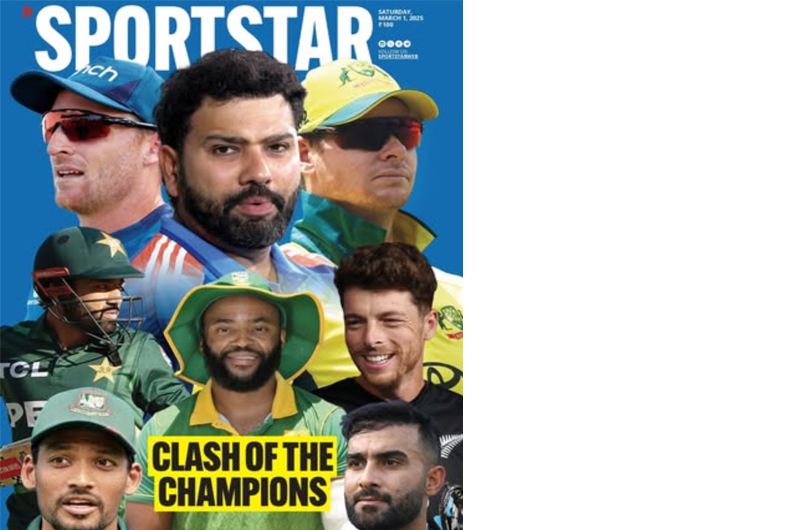The Champions Trophy tournament which has just commenced (being hosted by Pakistan and the United Arab Emirates from 19th February to 9th March) is the most open of all the ICC events. This is best driven home by the fact that in eight editions, the last of which was in 2017, seven teams have had their hands on the trophy. South Africa, New Zealand, India, Pakistan, Sri Lanka, Australia and West Indies have all had their names etched on the cup with Sri Lanka and India having shared it in 2002 when rain halted both attempts to conduct the final. This time, most of the leading contenders are without top players thanks to injuries and other reasons and this makes the event even more open and unpredictable, says Partab Ramchand
Rankings have meant little when it comes to the Champions Trophy competition and there has been no domination except once briefly when Australia won it twice in a row in 2006 and 2009. This year’s tournament promises to be not very different with the participating teams having been rather inconsistent in the lead-up to the event. The ICC rankings itself has five teams – India, Australia, Pakistan, New Zealand and South Africa – almost bunched together.
There is another reason why it is difficult to predict the winner. Most of the leading contenders are without top players thanks to injuries and other reasons and this makes the event even more open and unpredictable. The worst hit in this regard is Australia. They are without all three pace spearheads Pat Cummins, Josh Hazlewood and Mitchell Starc. Cummins suffered an ankle injury during the Border-Gavaskar Trophy and he missed the entire tour of Sri Lanka. Hazlewood has been out of action for some time after suffering a hip injury early in the Test series against India. Starc has withdrawn from the tournament due to personal reasons. In addition, they are without Mitch Marsh, currently having to endure a pain in the lower back. To make matters worse, Marcus Stoinis, who has a proven record in ODIs, unexpectedly announced his retirement on the eve of the tournament from the 50-over format to focus exclusively on T-20 internationals.
For India, there may be only one casualty but that is a serious one. Jasprit Bumrah’s absence will be more than just missing a pace spearhead. He is the world’s leading fast bowler right now and has emerged as an inspiring figure. But ever since he sustained the lower back injury during the recent Border-Gavaskar Trophy, there was always a doubt whether he would be fit for the Champions Trophy. Bumrah has been subjected to an excessive workload lately and it is likely that he will be out of action for an extended period. Harshit Rana has been called up as his replacement but filling Bumrah’s shoes will be no easy task.
South Africa will miss leading pace bowlers Anrich Nortje and Gerald Coetzee. The former is known to bowl at speeds around the 150 kmph mark consistently but at the moment he is recovering from a back injury. The absence of Coetzee nursing a groin injury will be just as serious for he really impressed during the 2023 World Cup in India when he was South Africa’s leading wicket taker.
England will miss their young batting all-rounder Jacob Bethell who has been ruled out due to hamstring injury sustained during an ODI against India earlier this month. Afghanistan will be without two leading players in Mujeebur Rahman and Allah Ghazanfar. The former who has been an integral part of the Afghan team for long was ruled out after he sustained a sprain in the index finger of his bowling hand. Ghazanfar who at 18 is already being touted about as a spin sensation has a fracture in his vertebra. Pakistan will be without their promising young opener Saim Ayub who is undergoing treatment in England for a right ankle fracture.
The eight teams have been placed in two groups. Group A consists of India, Pakistan, Bangladesh and New Zealand while Group B has England, Australia, Afghanistan and South Africa. The two top teams will qualify for the semifinals. The final is scheduled for March 9. Pakistan are the defending champions having won the previous competition held eight years ago in England with a thumping 180-win over India in the title clash.
Going by the ICC rankings, it would be tempting to put Bangladesh and Afghanistan as no-hopers, leaving the field open for the three others in the two groups to fight it out for a place in the last four. But the ODI format is tricky. It all depends on the days’s performance. One good day could see a team progress, one bad day could see a team eliminated. We have seen it happen all too often and it is hazardous to make predictions when it comes to this format as also T-20.
Much interest will center round how Australia is able to overcome the absence of several key players. They go into the tournament having lost badly in Sri Lanka and as such cannot be high on confidence. Also low on confidence must be England after losing all three ODIs in India. Under the circumstances, South Africa could fancy their chances of making the semifinals at least. New Zealand’s chances of a semifinal spot cannot be rated as high, being placed with India and Pakistan. India is riding high at the moment while Pakistan’s biggest advantage will be playing at home. All in all, an intriguing three weeks of cricket is in store for fans the world over headed by the marquee clash between India and Pakistan in Dubai on February 23.
(The writer is a veteran sports writer who spent his career working for The Indian Express and The Telegraph and Sportsworld. He lives in Chennai.)



 from Webdoux
from Webdoux